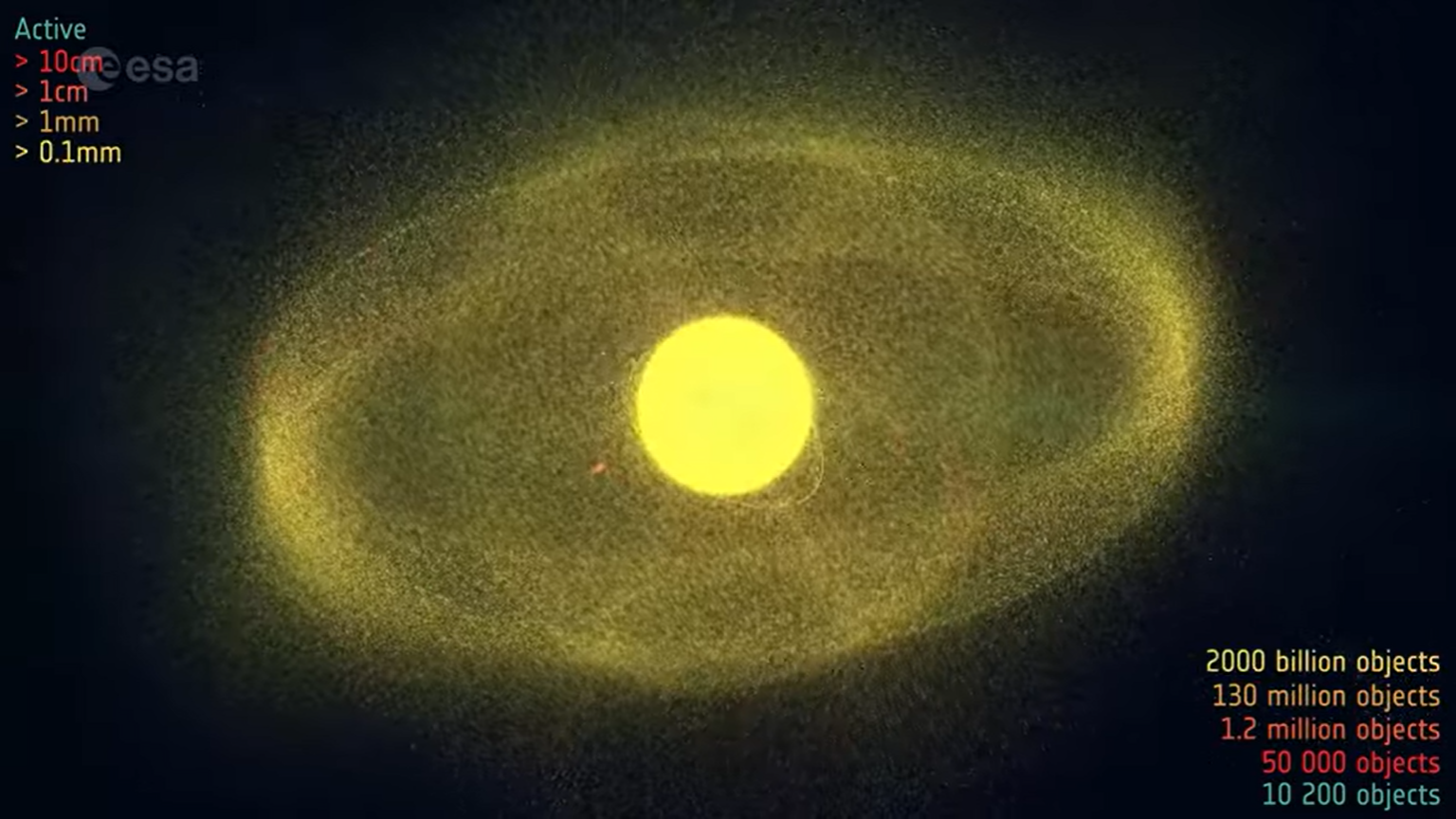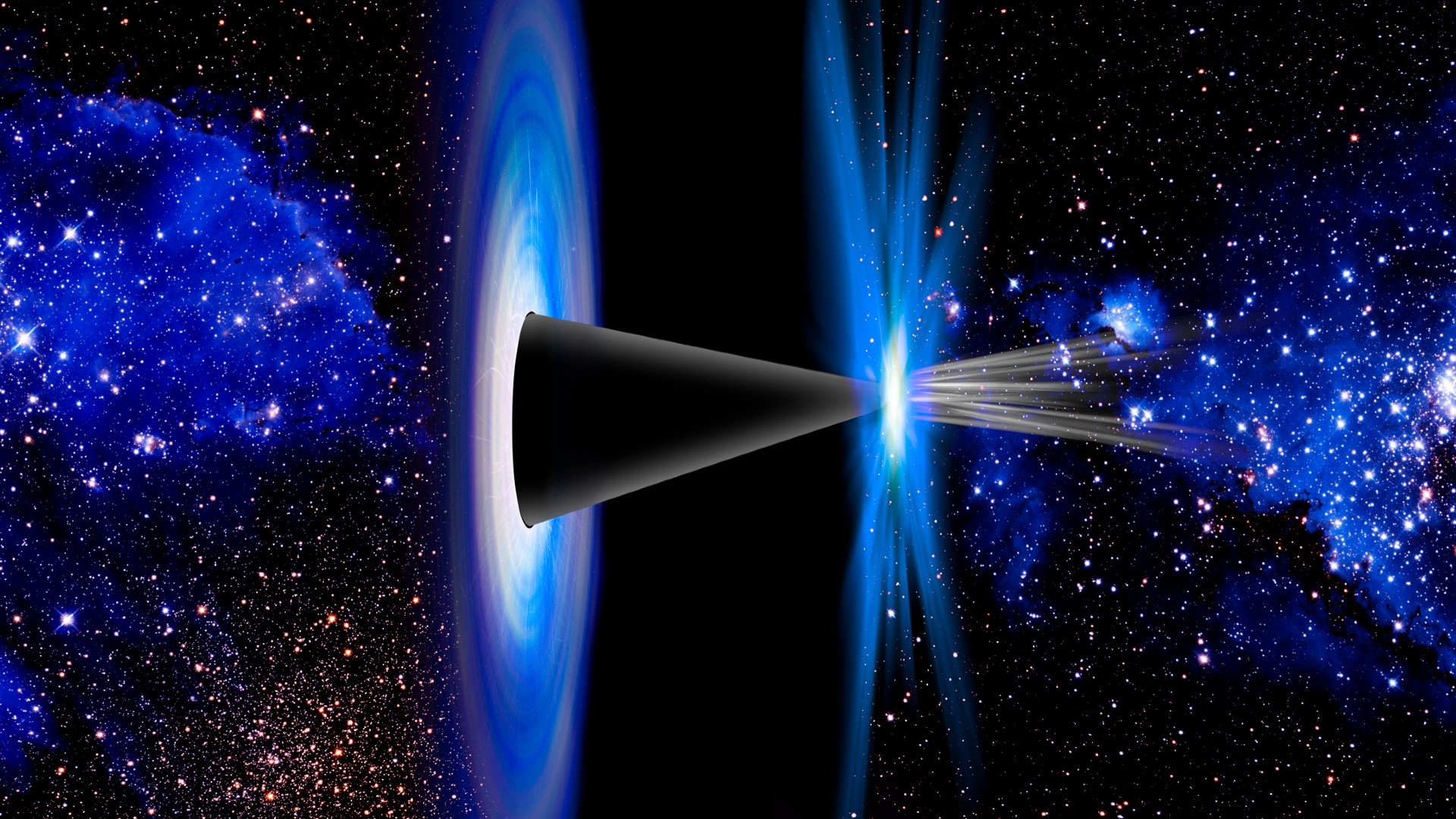ESA's new documentary paints worrying picture of Earth's orbital junk problem
There are a lot of satellites, and a lot of trash, around our planet — and the quantities are only going to get higher.
A new documentary short released by the European Space Agency presents an ominous statement within its first 20 seconds: "Around 70% of the 20,000 satellites ever launched remain in space today, orbiting alongside hundreds of millions of fragments left behind by collisions, explosions and intentional destruction."
The approximately eight-minute-long film "Space Debris: Is it a Crisis?" attempts to answer its conjecture with supportive statistics and orbital projections.
For instance, it discusses how the rise of satellite constellations (think, SpaceX Starlink internet satellites) is bound to further increase the amount of stuff that orbits our planet — yet simultaneously, the amount of space junk will likely go up, too, due to shards of rockets tearing off during launch and out-of-commission spacecraft that can't be returned to the ground in a timely manner.

Considering how quickly things in Earth orbit tend to zip around, a fragment of a spacecraft crashing into a satellite could greatly hinder that satellite; two satellites colliding could be catastrophic for both. Sometimes, debris even falls uncontrolled back to our planet.
The film also mentions that the kind of Earth orbit matters when discussing whether we're in a space junk "crisis" — though unfortunately, orbits at risk appear to be those with satellites that help with communication and navigation, as well as our fight against another primarily human-driven crisis: global warming.
Still, the film emphasizes that solutions ought to be thought of carefully: "True sustainability is complex, and rushed solutions risk creating the problem of burden-shifting."
You can watch the film on ESA's website, linked just here.
Breaking space news, the latest updates on rocket launches, skywatching events and more!
Join our Space Forums to keep talking space on the latest missions, night sky and more! And if you have a news tip, correction or comment, let us know at: community@space.com.

Monisha Ravisetti is Space.com's Astronomy Editor. She covers black holes, star explosions, gravitational waves, exoplanet discoveries and other enigmas hidden across the fabric of space and time. Previously, she was a science writer at CNET, and before that, reported for The Academic Times. Prior to becoming a writer, she was an immunology researcher at Weill Cornell Medical Center in New York. She graduated from New York University in 2018 with a B.A. in philosophy, physics and chemistry. She spends too much time playing online chess. Her favorite planet is Earth.
You must confirm your public display name before commenting
Please logout and then login again, you will then be prompted to enter your display name.
